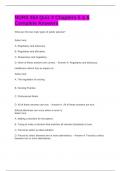Samenvatting
Summary Migration, Families and Households - Readings
A summary of áll mandatory readings (there are one or two compulsory readings for each session). It concerns the course Migration, Families and Households 2023/2024 at the University of Groningen. Good preparation material for the final written exam!
[Meer zien]













